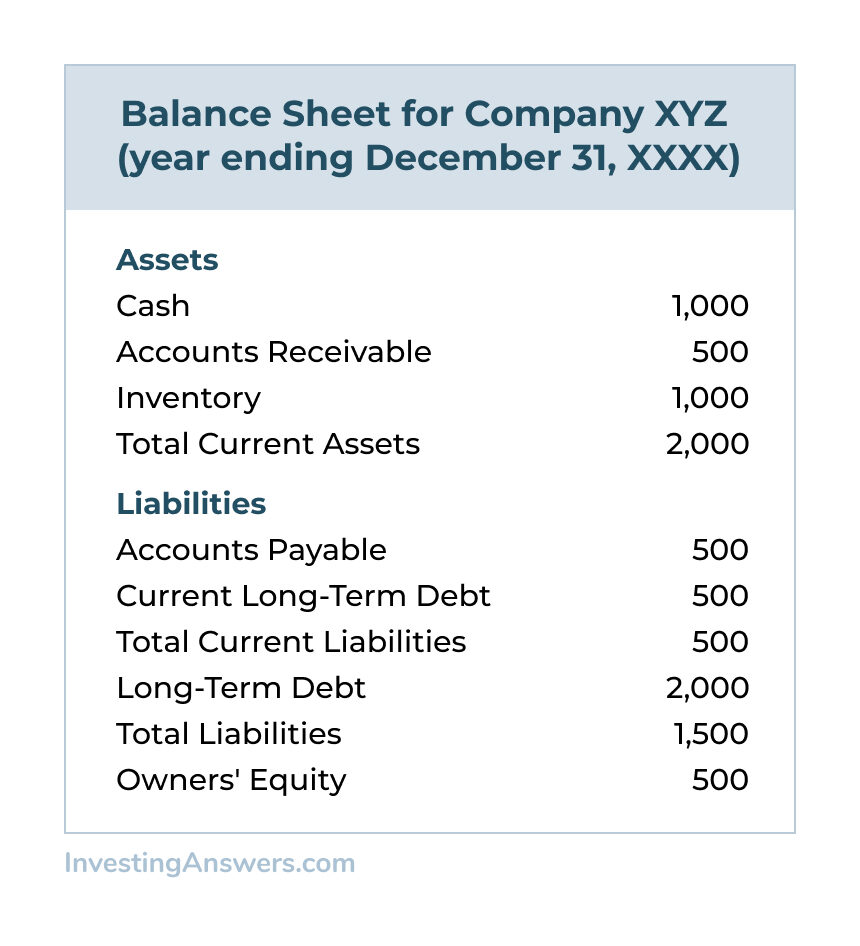
By reducing its current liabilities, a company can decrease its short-term debt, improving its ability to meet its obligations. If the company is not generating enough revenue to cover its short-term obligations, it may need to dip into its cash reserves, which can lower the current ratio. For example, a manufacturing company that produces goods may have a lower current ratio than a service-based company that does not have to maintain inventory. For example, let’s say that Company F is looking to obtain a loan from a bank. The bank may evaluate Company F’s current ratio to determine its ability to repay the loan.

Industry variations:
The current ratio does not consider off-balance sheet items, such as operating leases, which can significantly impact a company’s financial health. For example, retail businesses may have a higher current ratio due to the nature of their inventory turnover. The current ratio types of operational projects helps investors and stakeholders assess a company’s financial risk by measuring its ability to pay off short-term debts. A low current ratio may indicate a company’s difficulty meeting its short-term obligations, which can be a red flag for investors and stakeholders.
Your current liabilities (also called short-term obligations or short-term debt) are:
At the end of 2022, the company reported $154.0 billion of current liabilities, almost $29 billion greater than current liabilities from 2021. However, if you learned this skill through other means, such as coursework or on your own, your cover letter is a great place to go into more detail. For example, you could describe a project you did at school that involved evaluating a company’s financial health or an instance where you helped a friend’s small business work out its finances. Outside of a company, investors and lenders may consider a company’s current ratio when deciding if they want to work with the company.
- Accountants also often use this ratio since accounting deals closely with reporting assets and liabilities on financial statements.
- Shaun Conrad is a Certified Public Accountant and CPA exam expert with a passion for teaching.
- Negotiating better supplier payment terms can also improve a company’s current ratio.
- The quick ratio is considered a more conservative measure of a company’s ability to meet its short-term obligations.
- GAAP requires that companies separate current and long-term assets and liabilities on the balance sheet.
Comparison to Industry Benchmarks – Why Is the Current Ratio Important to Investors and Stakeholders?
Let’s look at examples of how the current ratio can be used to evaluate a company’s financial health. We’ll also explore why the current ratio is essential to investors and stakeholders, the limitations of using the current ratio, and factors to consider when analyzing a company’s current ratio. As an example, let’s say that a small business owner named Frank is looking to expand and needs to determine his ability to take on more debt. Before applying for a loan, Frank wants to be sure he is more than able to meet his current obligations. Frank also wants to see how much new debt he can take on without overstretching his ability to cover payments.
For example, this ratio is helpful for lenders because it shows whether the company can pay off its current debts without adding more loan payments to the pile. A company can manipulate its current ratio by deferring payments on accounts payable. This increases the amount of cash on hand, increasing the current ratio.
Besides, you should analyze the stock’s Sortino ratio and verify if it has an acceptable risk/reward profile. Learn more about Bench, our mission, and the dedicated team behind your financial success. Get free guides, articles, tools and calculators to help you navigate the financial side of your business with ease. Over-trading companies are likely to face substantial difficulties in meeting their day-to-day obligations. With that said, the required inputs can be calculated using the following formulas. Current liabilities are obligations that are to be settled within 1 year or the normal operating cycle.
The current ratio can also provide insight into a company’s growth opportunities. A high current ratio may indicate that a company has excess cash that can be used to invest in future growth opportunities. In contrast, a low current ratio may indicate that a company needs to improve its liquidity before pursuing growth opportunities.
For example, companies in industries with high inventory turnover, such as retail, may have lower current ratios due to the high inventory value on their balance sheets. In that case, it may need to increase its current assets or reduce its liabilities to improve its financial health. On the other hand, if a company has a high current ratio, it may have excess cash that could be used better, such as investing in new projects or paying down debt. As a fundamental financial metric, the current ratio is essential in assessing a company’s short-term financial health.

